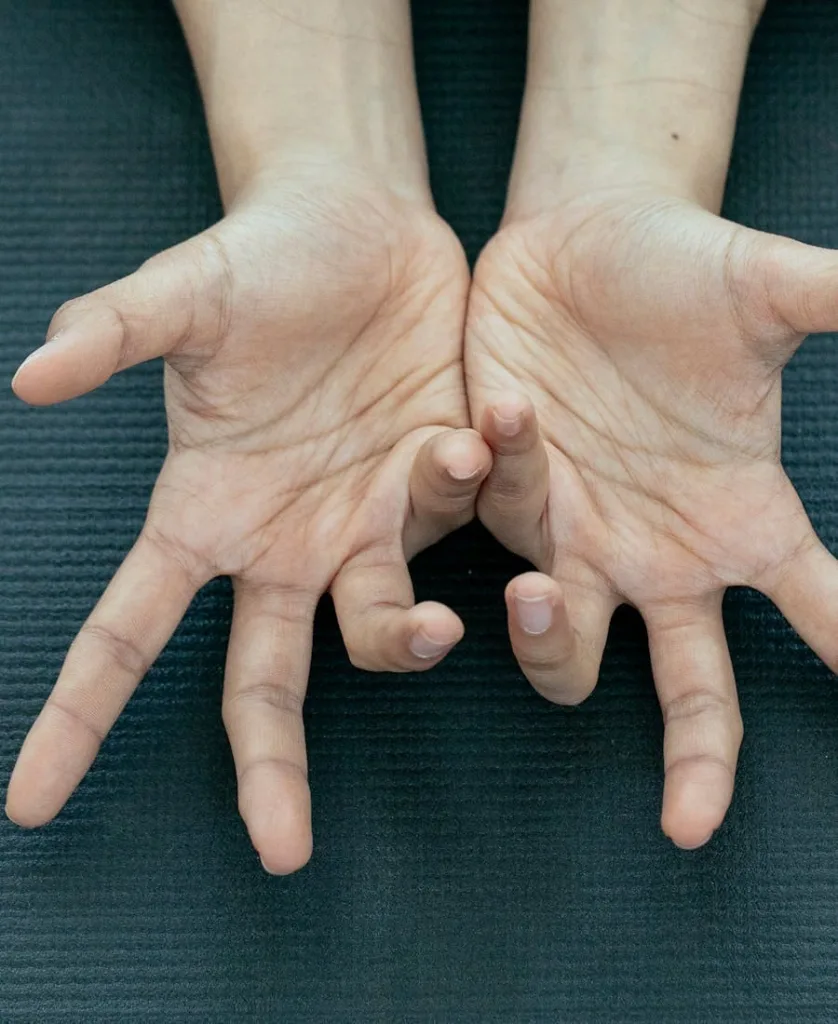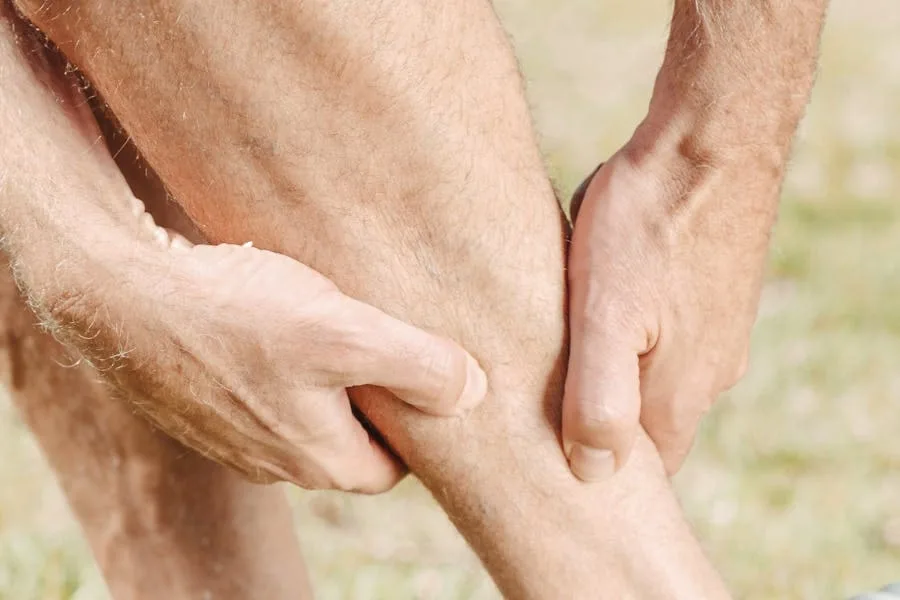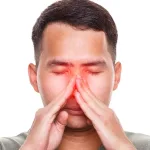Muscle spasms are commonly experienced as sudden, involuntary contractions of muscles, which can occur in various body parts.
These spasms can range from a mild twitching to severe cramps that may temporarily immobilize the affected area.
While often attributed to physical factors such as exercise, dehydration, or electrolyte imbalances, there is a perspective that considers muscle spasms to hold a spiritual significance.
In certain spiritual circles, muscle spasms are seen as more than mere physiological responses.
They are interpreted as signals carrying deeper meanings, relating to an individual’s inner emotional and spiritual state.
Some believe that these involuntary contractions may indicate a spiritual awakening or the activation of energy centers within the body, pointing to a transformative phase in one’s life.
Muscle Spasms Spiritual Meaning

1) Interpreting Physical Sensations
Muscle spasms are often experienced as sudden, involuntary contractions of muscles. While typically considered from a physical standpoint, some belief systems suggest that these spasms can have spiritual implications.
They may symbolize an interconnectedness between the body and the spirit, indicating an area of energetic imbalance or a sign from the universe.
2) Mentors in Spiritual Healing
Individuals seeking to understand the spiritual aspects of muscle spasms may turn to spiritual mentors.
These healers or guides are purported to assist individuals in decoding the messages conveyed by their bodies and provide strategies for restoring energetic harmony.
Read too: Why Is My Nose Twitching? 15 Spiritual Meanings (Explained)
3) Mind-Body Connection
The notion that the mind and body are inextricably linked is central to some spiritual beliefs.
Muscle spasms, within this context, might not only be a response to physical stimuli but also reflections of emotional or spiritual stress.
4) Unlocking Secret Meanings
The spiritual interpretation of muscle spasms can vary among different cultures and spiritual traditions.
Some may view them as messages that warrant attention, prompting self-reflection or action in response to the inferred spiritual meaning.
5) Physiological Triggers and Spiritual Overlay
Although conditions like dehydration, fatigue, or medical issues can trigger muscle spasms, in a spiritual context, these physical triggers are sometimes viewed as secondary to an overarching spiritual narrative.
6) Positive Spiritual Indicators
Certain spiritual perspectives posit that muscle spasms might herald positive developments.
They could be interpreted as omens of good news or uplifting changes forthcoming in one’s life.
Interpreting the Location of Spasms
The location of a muscle spasm can be indicative of different spiritual messages according to some spiritual beliefs.
It is thought that various areas of the body may correspond to distinct metaphysical concepts or emotional states.
Upper Body
Shoulders:
- Spasms in the shoulders could symbolize burdens or emotional stress that one is carrying. It is often related to feeling overwhelmed or bearing heavy responsibilities.
Forehead:
- Involuntary twitches or spasms in the forehead area might be considered a sign of stress or overthinking. Some might interpret these spasms as a reminder to calm the mind.
Lower Body
Hips:
- The hips are sometimes associated with movement and change. Spasms here could imply resistance to new experiences or a reminder to be more flexible or open to change.
Feet:
- As the foundation of physical movement, spasms in the feet might symbolize the need to move forward or to step into new opportunities.
Lower Back:
- The lower back is often linked to support and stability. Muscle spasms in this area may suggest feelings of insecurity or fears regarding financial or emotional support.
Spine:
- The spine is commonly associated with support and personal strength. Spasms along the spinal column could indicate a misalignment between one’s values and actions.
If you are enjoying reading this, you will definitely enjoy reading Clove Spiritual Meaning (Is It Good Or Bad Sign?)
Healing and Managing Muscle Spasms

Muscle spasms can be both uncomfortable and disruptive, necessitating a blend of physical treatments and spiritual practices for mitigation and management.
The following subsections delve into specific strategies that foster healing and help maintain muscular harmony.
Physical Treatments
Massage Therapy:
Massage is an effective method to release muscle tension and alleviate spasms.
It involves applying pressure to the affected muscles, which can promote blood flow and hasten the recovery process.
A massage therapist can target areas with persistent cramps to bring about relief.
Yoga:
Engaging in yoga can increase flexibility and strength, reducing the frequency of muscle spasms.
Certain poses enhance muscular balance, while the stretching component of yoga may prevent cramps by relieving built-up tension.
- Key Benefits of Yoga for Muscle Spasms:
- Enhances flexibility and balance
- Promotes muscular harmony
- Reduces tension that may cause spasms
Spiritual Approaches
Meditation and Mindfulness:
Meditation can assist individuals in managing the pain associated with muscle spasms.
By focusing the mind and practicing mindfulness, one may reduce stress, which is a common precursor to muscular tension.
Energy Healing and Visualization:
Practices like Reiki or therapeutic touch are centered on the belief in energy healing.
They propose that by visualizing or channeling energy, one can promote internal balance and facilitate the healing of spasms.
Visualization techniques during such practices can aid in relaxing the muscles and reducing cramps.
Incorporating Spiritual Practice:
Including regular spiritual practice in one’s routine can contribute to overall well-being and may help in coping with the discomfort of muscle cramps.
Activities like prayer or engaging in rituals can foster a sense of peace and may indirectly influence physical health by alleviating stress.
Integrative Approaches for Holistic Well-Being
Integrative strategies for managing well-being consider the complex interplay between the body, mind, and spirit.
These approaches address muscle spasms not just as physical occurrences but as experiences with potential spiritual significance, offering comprehensive care that transcends conventional medicine.
- Mind: Emphasis on the mind’s influence encourages practices that promote inner peace and balance emotions. Techniques include meditation, mindfulness, and cognitive reframing to transform thoughts for better health.
- Body: Physical wellness is maintained through dietary guidance, physical therapy, and regular exercise. These methods support the body’s natural healing capacity and can alleviate symptoms like muscle spasms.
- Spirit: Exploring spiritual practices aids individuals in self-discovery and fosters spiritual growth. Working with a spiritual teacher, healer, or mentor can provide valuable insights into the spiritual realm.
It’s crucial to approach overall well-being with a multifaceted plan. This acknowledges the role of spiritual healing, supplementing medical treatments with alternative therapies that encourage transformation and holistic growth.
- Emotional Aspect: Therapies such as guided imagery and biofeedback address the emotional factors involved in muscle tension.
- Spiritual Healing: Techniques like Reiki or sound therapy can be effective in addressing the energetic imbalances that may contribute to physical symptoms.
A commitment to integrative methods supports not only the alleviation of symptoms but also a pathway to holistic health and well-being.
Before you leave, read Singing: The Spiritual Benefits For Your Soul
Final Words

Interpreting muscle spasms through a spiritual lens is a subjective experience and varies greatly from person to person.
This perspective suggests that one’s body might be communicating deeper messages, possibly indicating stuck energy or unresolved emotions.
Some believe these spasms are spiritual signs, possibly heralding forthcoming events or changes in one’s life.
However, it is crucial to approach such interpretations with caution and to consider multiple factors, such as:
- Location of the Spasm: It is thought that the specific area of the body experiencing the spasm may carry unique messages.
- Frequency and Intensity: Repetitive or particularly intense spasms might indicate a more urgent or significant spiritual message.
It is essential to remember that while some may find comfort and insight in spiritual interpretations of muscle spasms, any recurring or painful spasms should be medically evaluated.
Health professionals can provide diagnoses and treatments for the physical aspects of muscle spasms, ensuring that any underlying conditions are properly addressed.
Embracing a balanced view that acknowledges both spiritual and medical perspectives can lead to a comprehensive understanding of one’s health and wellbeing.








